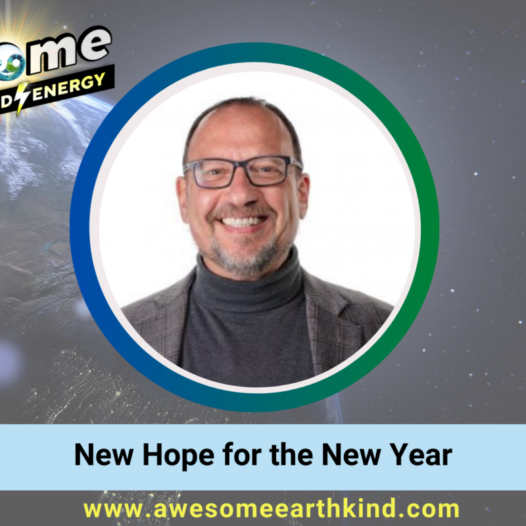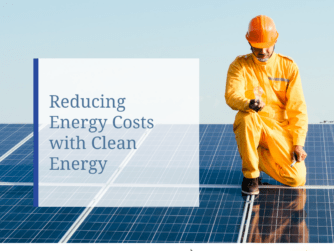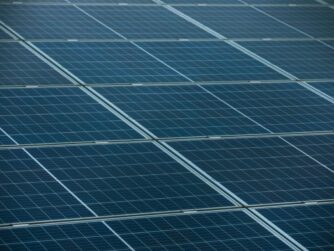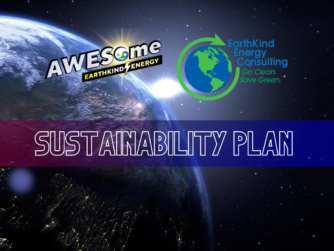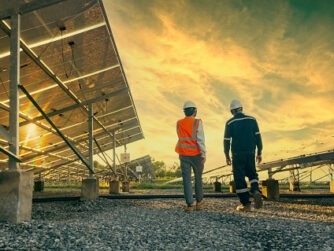Happy New Year, Awesome People!
Welcome to 2022!
The turning of the year provides the opportunity to stop, see where we are, remember the lessons of where we’ve come from, and determine our intentions and goals for the future.
In the first AWESome EarthKind episode over a year ago, we interviewed Denis Hayes, the original organizer of Earth Day who then led the movement that made Earth Day the most widely celebrated secular holiday in the world, involving over 1 Billion human beings.
In that interview, Denis spoke about how there is Always Hope. He recounts several turning points in history where the future was dark and bleak – and yet, despite the odds, people held onto hope and snatched victory out of the jaws of impending defeat.
While today there is much to be rightly concerned about – there are also brilliant starbursts of light that ignite hope and show us a path forward.
Here are some excerpts from the Good News Network (https://www.goodnewsnetwork.org/) and various other sources:
Despite a few national governments continuing to keep their coal and oil projects afloat, market demand and private entrepreneurship is driving what can only be described as a revolution in renewable energy.
These latest achievements were basically unbelievable when global climate change was first being discussed as a serious threat. But today, each successive development of renewable energy generation, clean heating & cooling, and electric cars, makes new achievements cheaper and easier to scale.
Solar on Demand – the least expensive energy source on the planet
The United States National Renewable Energy Lab (NREL) reports that solar and storage costs have fallen dramatically over the past decade. The price of residential solar was reported down from $7.53/W in 2010 to $2.65/W in 2021,; utility-scale solar was $5.66/W a decade ago to $0.89/W today.
That was driven in large part by higher module efficiency and lower module cost.
Just a few years ago, solar-plus-storage prices were more than triple today’s going rates.
Today, solar and battery storage provide the lowest cost energy on the planet. Last year, 3/4s of all new electric generation capacity in the world was built with solar.
The windiest on record
2021 was the single best year on record for wind turbine manufacturers with 93 new gigawatts (BILLION watts) being added—a 53% increase since 2020. The 2021 Global Wind Report summary states:
“Through technology innovations and economies of scale, the global wind power market has nearly quadrupled in size over the past decade and established itself as one of the most cost-competitive and resilient power sources across the world.”
“Today, there is now 743 GW of wind power capacity worldwide, helping to avoid over 1.1 billion tons of CO2 globally—equivalent to the annual carbon emissions of South America.”
HOT ELECTRIC CARS
Data assembled back in March from Germany’s largest automotive industry review produced a startling statistic – 1 in 5 cars made in Germany can be plugged in.
The Schmidt Automotive Research Center found that 74,000 of the 374,000 cars that left German assembly lines were either electric or hybrid electric vehicles.
On the demand side, things are just as rosy. Germany is the fourth largest auto market in the world, and electric car registrations grew from a 4% national market share in December 2019, to a whopping 26% market share just 12 months later.
This is just in the background of a global surge in EV purchasing that climbed 40% during 2020, when most markets were suffering from COVID-related issues.
Bloomberg New Energy Fund “expects that EVs will make up 20-30% of sales in the United States, European Union and China by 2025, based on “proposed and confirmed rules” in those markets. President Joe Biden has set a goal for half of new passenger vehicle sales in the United States to be electric vehicles by 2030. And New York and others have banned the sale of gas cars by 2035.
2021 is estimated to be “yet another record year for EV sales globally,” with 5.6 million sold. That is 83% higher than 2020 and a 168% increase over 2019 sales.
And global momentum towards zero-emissions vehicles (ZEV) has “accelerated significantly,” Bloomberg said. EVs will “capture a higher share of passenger vehicle sales, sooner than previously expected.”
The green new pension
Since its green shoots 50 years ago, acceptance of ESG (environmental, social, and governance) considerations in institutional investing – especially at pension funds – has evolved with distinct shifts in investor preferences.
As the holders of the largest state-controlled pension fund on Earth, the South Korean monetary authorities released a statement in May that the $771 billion National Pension Fund will cease all investments related to coal power both at home and abroad.
The fund also announced that they would revamp guidelines for investment strategies to ensure a more sustainable pattern emerges in the future.
Worldwide, ESG (Environmental Social & Governance) assets surpassed $35 trillion in 2020 – up from $30.6 trillion in 2018 and $22.8 trillion in 2016 reaching a third of current total global assets under management, according to the Global Sustainable Investment Association.
Adios, coal: Spain hits 50% renewable milestone
Back in mid-May, the Spanish legislature announced it would be phasing out all oil, coal, and gas production by 2042, and that all carbon-emitting vehicle sales would be banned by 2040.
In the short term, the Spanish lawmakers want 74% of the national energy consumption to be entirely renewable by the end of the decade. They are quite close to that goal already, as the month of May saw 50% of the nation’s energy demand fulfilled by green energy.
Romania also joined the effort, alerting the EU that through its National Recovery and Resilience Plan the country would cease all coal production by 2032, at which time it plans to have installed 34% renewable electricity to take over the baton.
G7, the world’s seven largest developed economies, all agreed to stop coal financing by the end of the year. Now that Japan is also on board, that leaves the African, India, and China as the last remaining holdouts.
Natural Gas Moratoriums & Heat Pumps
Dozens of cities, including San Francisco, Berkeley and San Jose in California; Cambridge, Mass.; and Seattle, Oregon have moved to ban natural gas hook ups in new buildings as a way to combat climate change.
In Westchester NY, there has been a moratorium on new natural gas hookups since 2018. And on December 15th, 2021 – New York City banned natural gas hookups for new buildings starting in 2027.
Green oil
All is not business-as-usual in the boardrooms of some of the world’s largest petroleum producers.
In a landmark court decision, a judge in the Netherlands ordered Royal Dutch Shell to cut emissions by 45% after 17,000 people brought a lawsuit that Shell’s large greenhouse gas footprint merits a significant investment in CO2-slashing as a debt to society.
Elsewhere in Europe, the Italian oil company Eni became the first European oil company to launch a corporate bond that is linked to sustainability.
The €1 billion 7-year bond is linked to two key performance indicators: “Increasing renewable installed capacity to 5GW by the end of 2025; and cutting the net carbon footprint of its upstream business by 50% by 2024,”
100% Clean Energy
On April 29th, 2021 over 29 million people in California got 95% of their power from renewable energy— and were contributing virtually nothing towards climate change as far as their electricity needs were concerned.
California follows another major population center, South Australia, which recently fulfilled 100% demand with renewables.
“It sends chills down my spine. It’s amazing,” said Elliot Mainzer, president and CEO of the California Independent System Operator, which runs the state’s main power grid. “These types of transitions aren’t always pretty. But we’re getting a lot of renewable generation online, making a real dent in the state’s carbon emissions,”
Mainzer recently urged the state to construct another 10,000 megawatts of renewables, an equivalent of one-eighth of the entire state baseload power, in order to cover the gaps in the grid.
Covering gaps in renewables is important for two reasons. The first is that electricity is the only resource that must be consumed as soon as it’s produced. That means projections of demand must always be just about perfect.
The second reason is that renewables most often have no form of storage, and the electricity they generate goes into the grid immediately upon production.
A Clean Economy = Healthier Communities
Scientists at UC Berkeley are hailing the state’s diesel engine standards for drastically dropping the amount of diesel particulate matter in the air, and reducing the cardiopulmonary deaths attributable to poor air quality.
If you never saw the pictures of the city of Los Angeles before the Clean Air Act, they look like something out of the movie Escape from L.A. But encouraging shifts away from high-sulfur fuels, and replacing diesel ships with electric ones, has gradually scaled the horror show back.
“Our analysis of mobile-source DPM (diesel particulate matter) emissions suggests that many California sector-based policies have been highly effective,” write the authors of the paper published in Science.
They found that from 1990 to 2014, the amount of DPM in the California skies fell by 78%, while cardiopulmonary and cancer deaths linked to diesel pollution dropped by 82%.
These are just some of the many positive actions that have been happening around the country and globe.
Obviously, there still much to be concerned about.
As I record this podcast, I have one son in Boulder Colorado whose former home community was destroyed by the recent wildfires. Only 1 mile away from his current home, 100 mph winds created a blast furnace of destruction for thousands of homes.
Thankfully, the massive snowfall has now contained that catastrophe. But my other son and his family were pummeled by 11 feet of snow on the way to their holiday vacation in Lake Tahoe.
Don’t Look Up
If you haven’t seen the new comedy film “Don’t Look Up” – it’s worth watching. While the insanity of ignoring science is pretty funny – the reality is that we can’t allow ourselves to continue to be distracted by day-to-day petty politics and our ridiculous obsession with social media.
We all need to join together, find a way to overcome our differences, and remember that our children’s future is the one overriding priority that we all share.
Creating a sustainable planet is a huge task. But as the recently deceased Desmond Tutu once wisely said: “there is only one way to eat an elephant: one bite at a time.”
Figure out how to take your bite – and let’s all keep moving forward, one small bite at a time…


